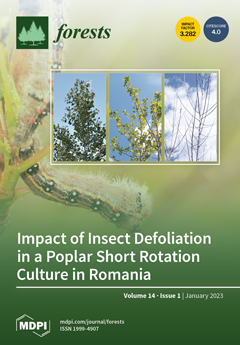Bamboo scrimber is a sustainable engineered material that overcomes natural round bamboo’s various weaknesses. This study compared the bamboo scrimber’s mechanical (strength, stiffness, and ductility) to timber. The results showed that scrimber’s physical and mechanical properties are comparable, even superior, to wood, especially
[...] Read more.
Bamboo scrimber is a sustainable engineered material that overcomes natural round bamboo’s various weaknesses. This study compared the bamboo scrimber’s mechanical (strength, stiffness, and ductility) to timber. The results showed that scrimber’s physical and mechanical properties are comparable, even superior, to wood, especially in compression. Scrimber has a higher density than timber. Its drier equilibrium moisture content indicates that scrimber is more hydrophobic than timbers. The maximum crushing strength (
σc//), compressive stress perpendicular-to-fiber at the proportional limit (
σcp⊥) and that at the 0.04” deformation (
σc0.04⊥), shear strength (
τ//), longitudinal compressive modulus of elasticity (
Ec//), lateral compressive modulus of elasticity (
Ec⊥), and modulus of rigidity (
G) of scrimber are higher than those of timbers. Both scrimber’s and timber’s flexural properties (modulus of rupture (
σb) and flexural modulus of elasticity (
Eb)) are comparable. On the contrary, the tensile strength parallel-to-fiber (
σt//) of scrimber is weaker than that of timber. Scrimber is high ductility (
μ > 6) when subjected to compression perpendicular-to-fiber, medium ductility (4 <
μ ≤ 6) when subjected to compression parallel-to-fiber, and low ductility (brittle) when subjected to bending, shear, or tensile parallel-to-fiber. The higher ductility of scrimber may give an alarm and more time before failure than timbers. Timbers have brittle to lower ductility when receiving each kind of loading scheme. The ratio of shear modulus to strength (
G/τ) and compression modulus to strength parallel-to-fiber (
EC∥/
σC∥) strongly correlates with the ductility ratio. However, the ratio of the flexural modulus of elasticity to the modulus of rupture (
Eb/σb) and the ratio of the modulus Young to compression stress perpendicular-to-fiber (
Ec⊥/
σcp⊥) do not strongly correlate to the ductility value.
Full article





